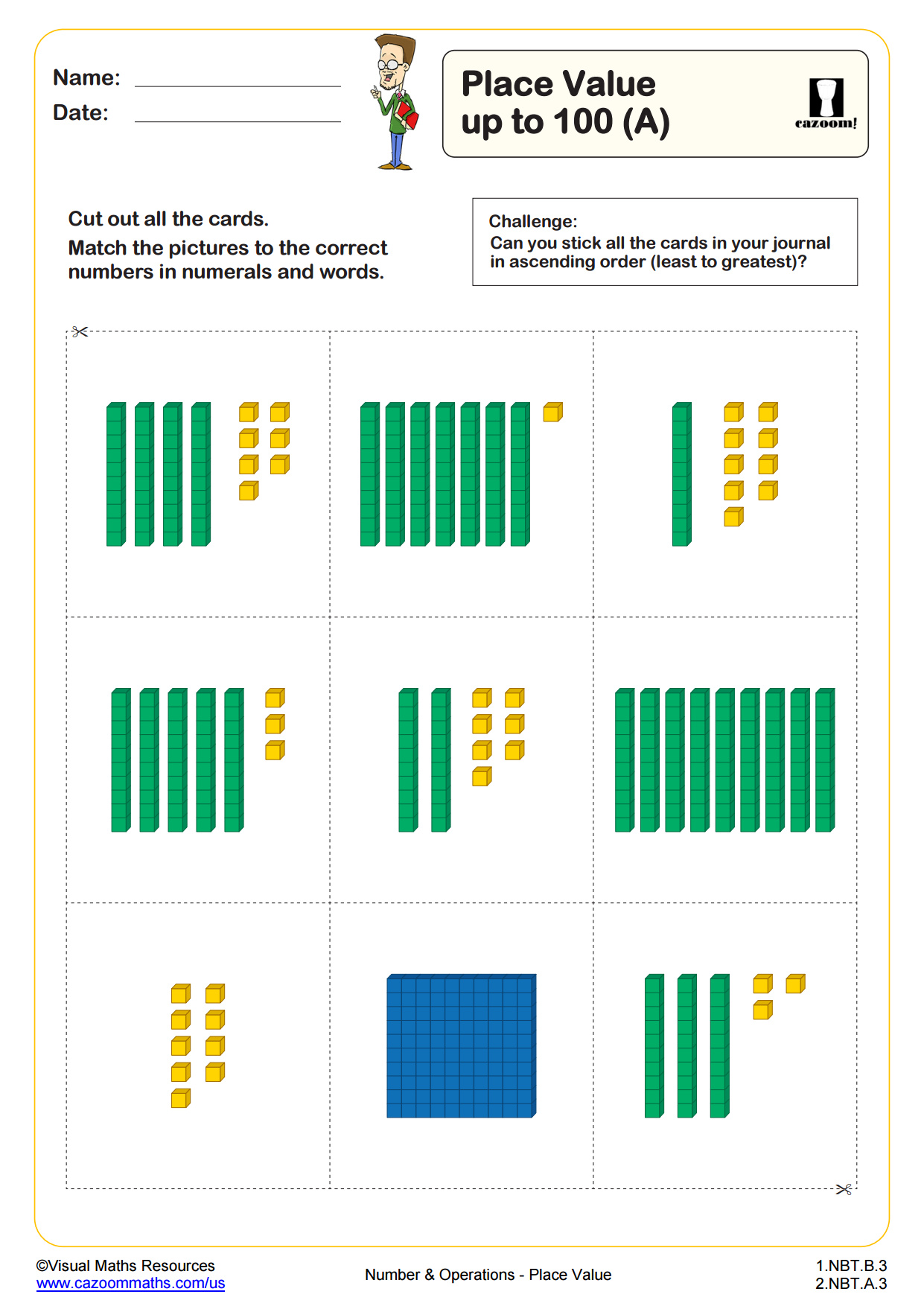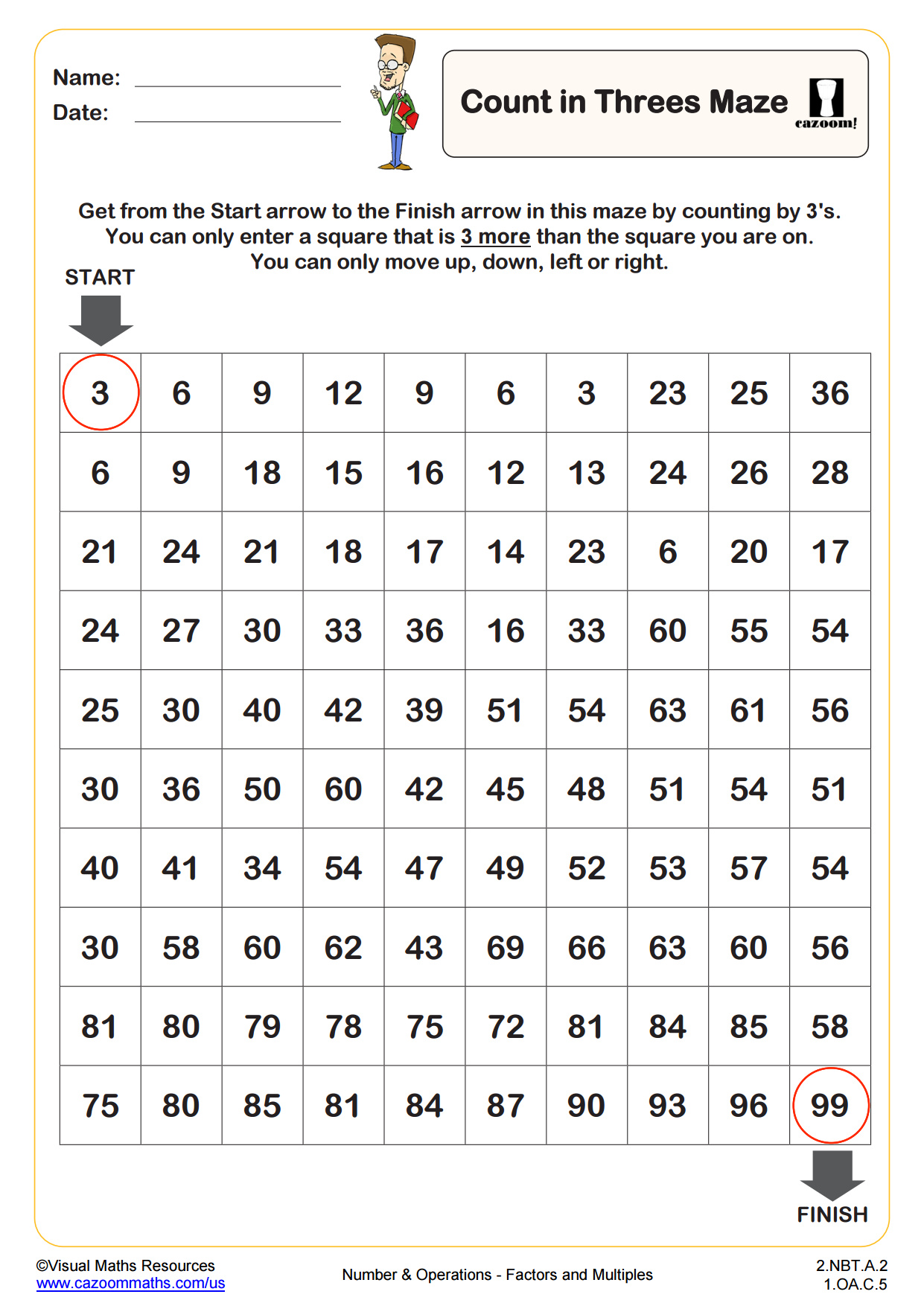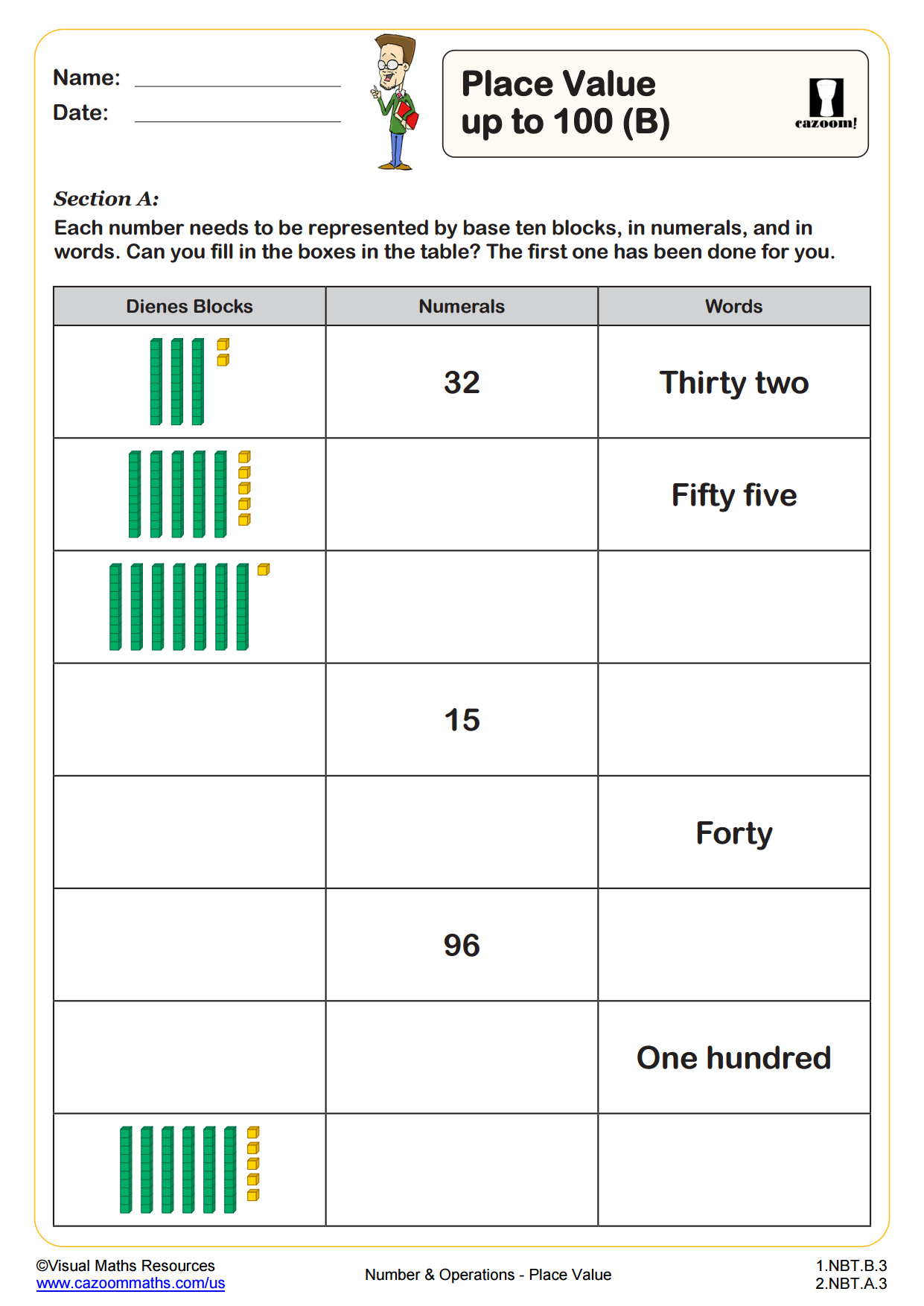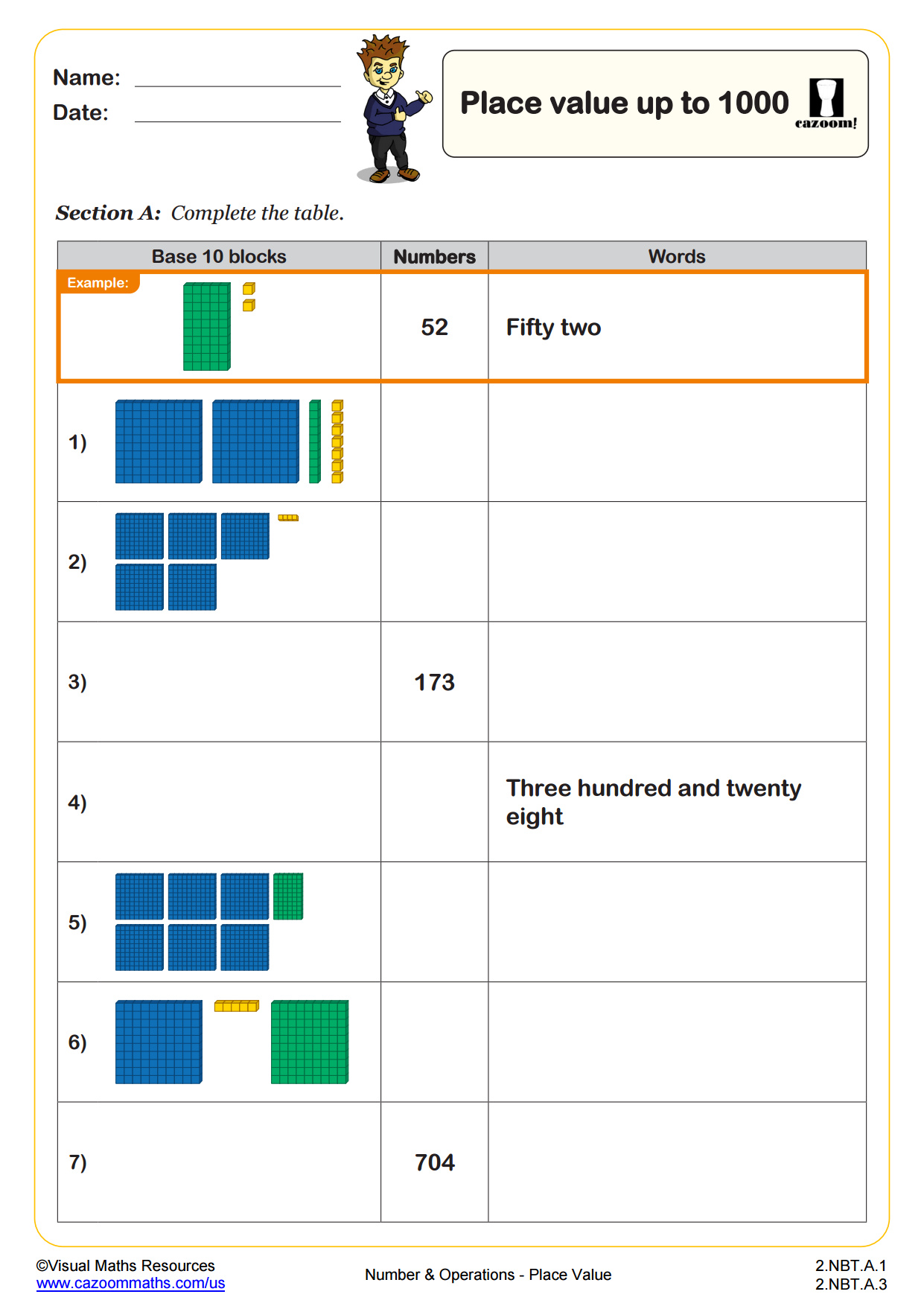Back to:
Compare and Order Numbers to 100 WORKSHEET
Suitable for Grades: 1st Grade
CCSS: 1.NBT.B.2, 1.NBT.B.3
CCSS Description: Understand that the two digits of a two-digit number represent amounts of tens and ones. Understand the following as special cases: a. 10 can be thought of as a bundle of ten ones — called a “ten.” b. The numbers from 11 to 19 are composed of a ten and one, two, three, four, five, six, seven, eight, or nine ones. c. The numbers 10, 20, 30, 40, 50, 60, 70, 80, 90 refer to one, two, three, four, five, six, seven, eight, or nine tens (and 0 ones).
Compare two two-digit numbers based on meanings of the tens and ones digits, recording the results of comparisons with the symbols >, =, and <.
Compare two two-digit numbers based on meanings of the tens and ones digits, recording the results of comparisons with the symbols >, =, and <.
Compare and Order Numbers to 100 WORKSHEET DESCRIPTION
Throughout this worksheet students will order numbers on number lines, use inequality symbols to compare pairs of numbers and identify numbers that are greater than or less than other numbers.
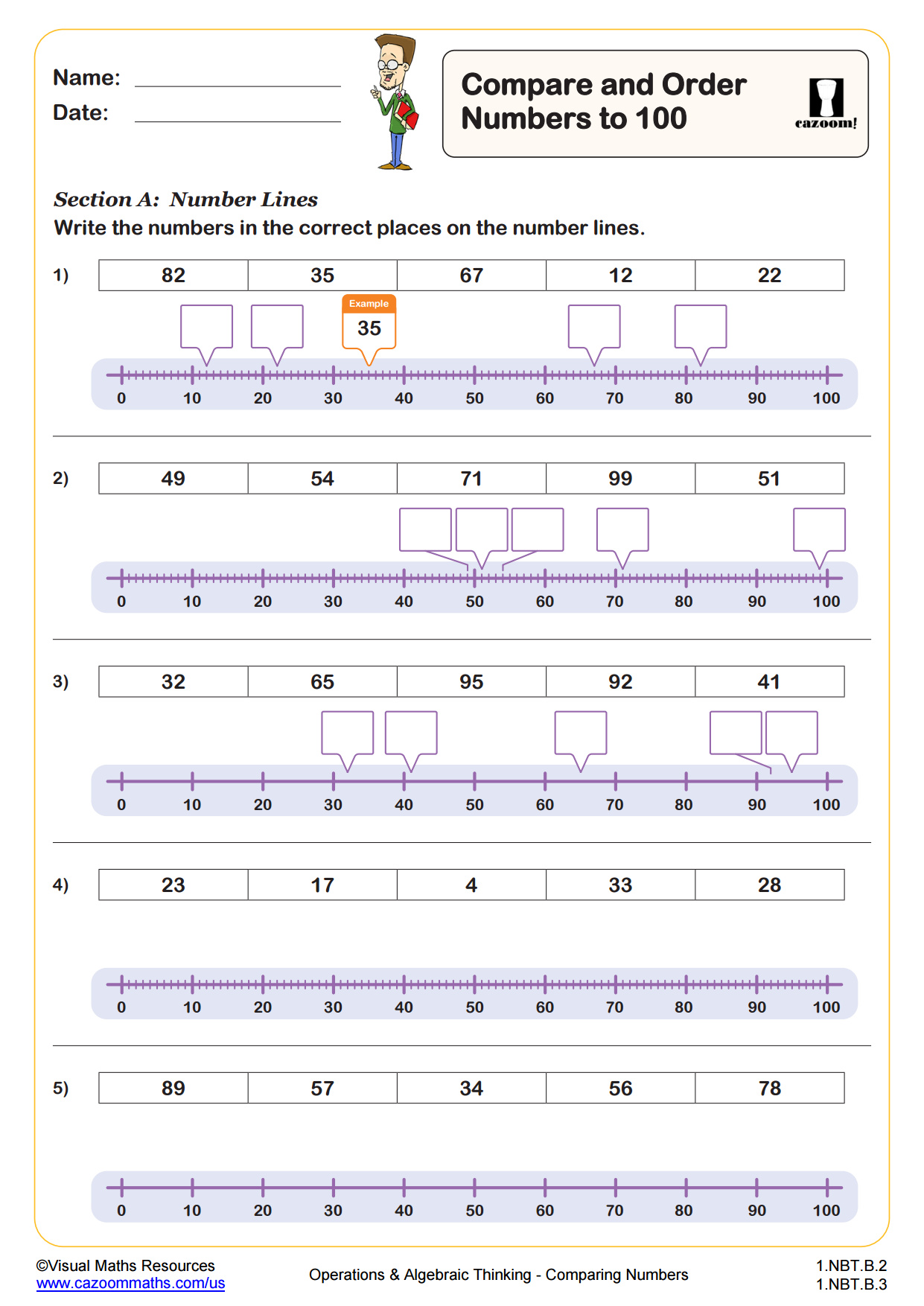
RELATED TO Compare and Order Numbers to 100 WORKSHEET
Frequently Asked Questions
This place value worksheet is designed for students in 1st Grade and aligns with the UK National Curriculum.
